Everything you ever wanted to know about Elephants!!
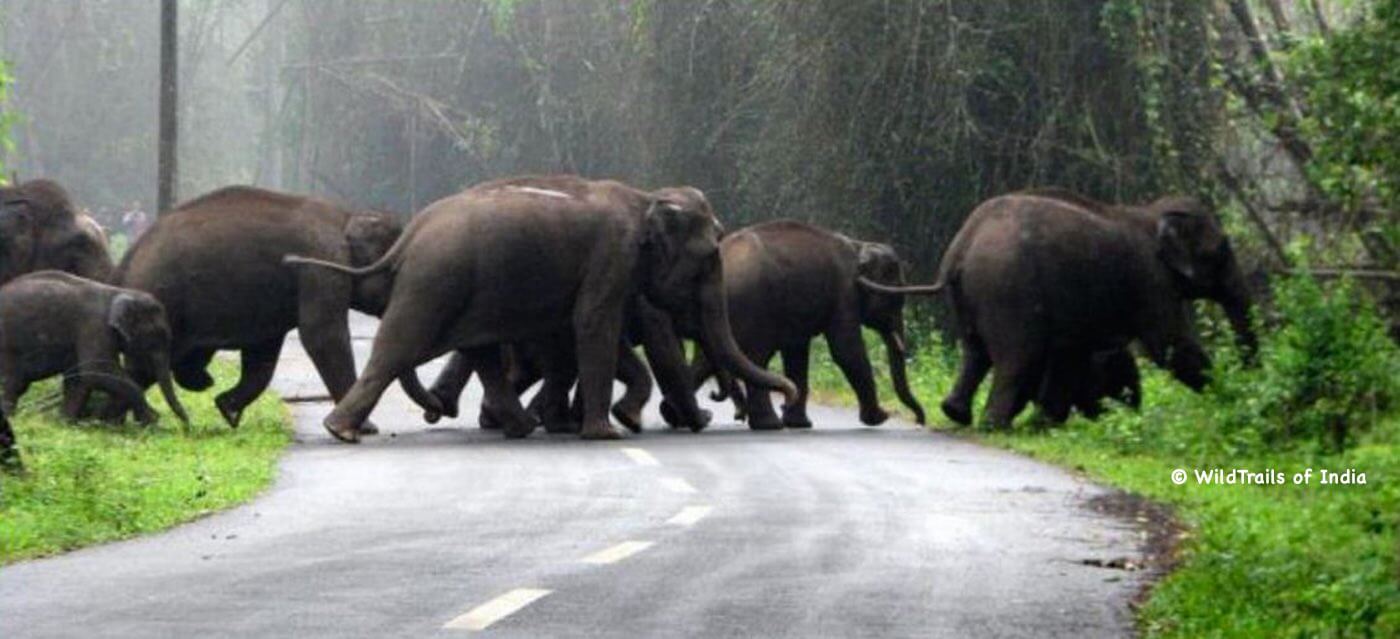
Did you know that only Male Indian Elephants has large Tusks and they are either right-tusked or left-tusked?
Like humans, who are typically right- or left-handed, elephants are usually right- or left-tusked. The dominant tusk, called the master tusk, is generally more worn down, as it is shorter with a rounder tip.
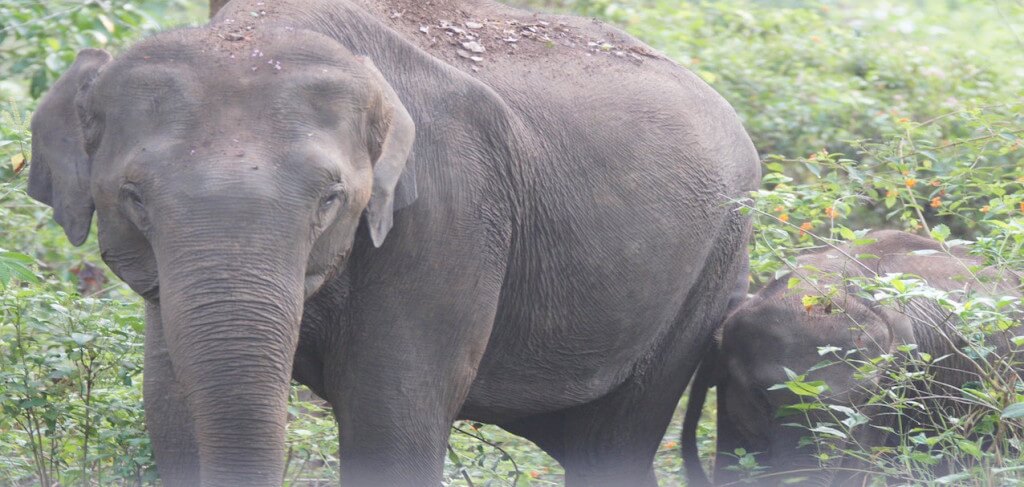
Elephants are large mammals.Two species are traditionally recognised, the African elephant (Loxodonta africana) and the Asian elephant. Elephants are scattered throughout sub-Saharan Africa, South Asia, and Southeast Asia.
General Characteristics
Male African elephants are the largest extant terrestrial animals and can reach a height of 4 m (13 ft) and weigh 7,000 kg (15,000 lb).
An elephant uses mud as a sunscreen, protecting its skin from ultraviolet light. After bathing, the elephant will usually use its trunk to blow dust onto its body and this dries into a protective crust.
Elephants can move both forwards and backwards, but cannot trot, jump, or gallop
Fast-moving elephants appear to ‘run’ with their front legs, but ‘walk’ with their hind legs and can reach a top speed of 18 km/h (11 mph)
Elephants are capable swimmers. They have been recorded swimming for up to six hours without touching the bottom, and have traveled as far as 48 km (30 mi) at a stretch and at speeds of up to 2.1 km/h (1 mph). They use their trunk to breathe like a snorkel in deep water.
All elephants have several distinctive features, the most notable of which is a long trunk used for many purposes, particularly breathing, lifting water and grasping objects.
Their incisors grow into tusks, which can serve as weapons and as tools for moving objects and digging. Elephants’ large ear flaps help to control their body temperature.
Their pillar-like legs can carry their great weight.
Elephants can live up to 70 years in the wild.
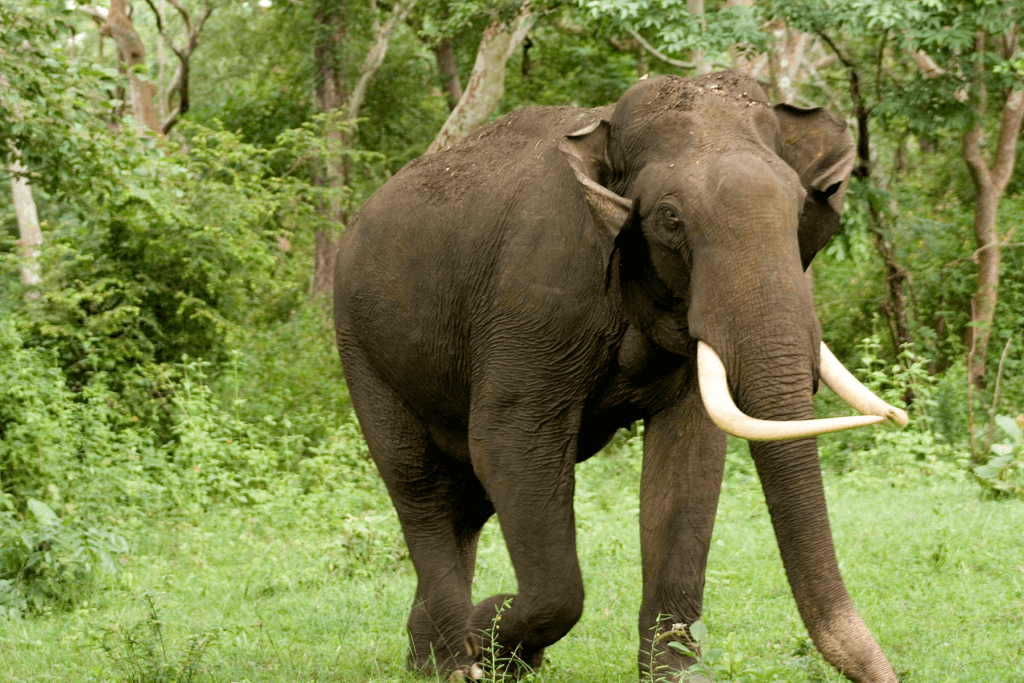
They can consume as much as 150 kg (330 lb) of food and 40 L (11 US gal) of water in a day.
Elephants tend to stay near water sources. Major feeding bouts take place in the morning, afternoon and night.
At midday, elephants rest under trees and may doze off while standing. Sleeping occurs at night while the animal is lying down.
Elephants average 3–4 hours of sleep per day.
Contrary to popular belief elephants do not drink from their trunk. They just use it to fill water and pass it to the mouth.
Because most of the food elephants eat goes undigested, their dung can provide food for other animals, such as dung beetles and monkeys.
Elephants ingest and defecate seeds, with a positive effect on germination. The seeds are typically dispersed in large amounts over great distances.
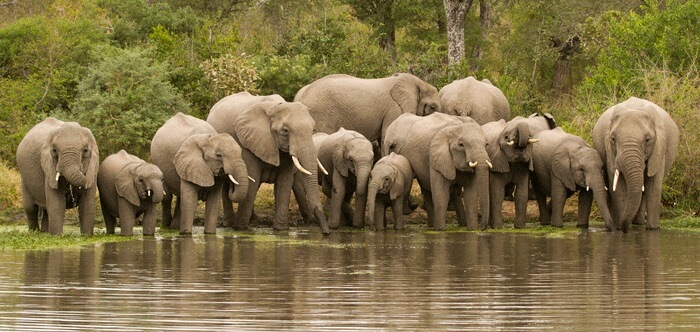
Elephants appear to distinguish between the growls of larger predators like tigers and smaller ones like leopards; the latter they react less fearfully and more aggressively to.
An elephant can use its tusks to dig for ground water. An adult elephant needs to drink around 210 litres of water a day.
The elephant’s trunk is able to sense the size, shape and temperature of an object. An elephant uses its trunk to lift food and suck up water then pour it into its mouth.
An elephant’s trunk can grow to be about 2 metres long and can weigh up to 140 kg. Some scientists believe that an elephant’s trunk is made up of 100,000 muscles, but no bones.
Communication
They communicate by touch, sight, smell and sound; elephants use infrasound, and seismic communication over long distances.
Touching is an important form of communication among elephants. Individuals greet each other by stroking or wrapping their trunks
Older elephants use trunk-slaps, kicks and shoves to discipline younger ones
Elephants communicate using everything from body signals to infrared rumbles that can be heard from kilometers away. Their understanding of syntax suggests that they have their own language and grammar.
Elephants produce several sounds, usually through the larynx, though some may be modified by the trunk. Perhaps the most well known is the trumpet, which is made during excitement, distress or aggression. Fighting elephants may roar or squeal, and wounded ones may bellow. Rumbles are produced during mild arousal and some appear to be infrasonic. Infrasonic calls are important, particularly for long-distance communication.
Intelligence & Memory
Elephant intelligence has been compared with that of primates and cetaceans. They appear to have self-awareness and show empathy for dying or dead individuals of their kind.
The brain of an elephant weighs 4.5–5.5 kg (10–12 lb) compared to 1.6 kg (4 lb) for a human brain. While the elephant brain is larger overall, it is proportionally smaller.
The elephant’s EQ is nearly as high as a chimpanzee’s.
The elephant’s large cerebral cortex allows them to be great problem solvers, which elephants display in many creative ways.
Elephants are among the species known to use tools. An Asian elephant has been observed modifying branches and using them as fly swatters. Tool modification by these animals is not as advanced as that of chimpanzees.
Elephants are popularly thought of as having an excellent memory. An elephant’s memory is not limited to its herd, nor is it limited to its species. In one instance, two circus elephants that performed together rejoiced when crossing paths 23 years later. Elephants have also recognized humans that they once bonded with after decades apart.
The elephant brain is remarkably similar to the human brain, with as many neurons and synapses, as well as a highly developed hippo-campus and cerebral cortex.
Elephants exhibit mirror self-recognition, an indication of self-awareness and cognition that has also been demonstrated in some apes and dolphins
Elephants know every member of their herd and are able to recognize up to 30 companions by sight or smell.
They can remember and distinguish particular cues that signal danger and can recall locations long after their last visit
Elephants are one of the few non-human animals to suffer from post-traumatic stress disorder.
Elephants are the only non-human animals to mourn their dead, performing burial rituals and returning to visit graves.They show empathy for dying or dead individuals of their kind.
https://www.youtube.com/watch?v=cg4aaXgWn2g&nohtml5=False
Don’t try to outsmart an elephant! They have an understanding of basic arithmetic and can even keep track of relative quantities.
Elephants can recognize 12 distinct tones of music and recreate melodies.
Social Groups
Females (“cows”) tend to live in family groups, which can consist of one female with her calves or several related females with offspring. The groups are led by an individual known as the matriarch, often the oldest cow.
Elephants have a fission–fusion society in which multiple family groups come together to socialize.
Males (“bulls”) leave their family groups when they reach puberty, and may live alone or with other males.
Adult bulls mostly interact with family groups when looking for a mate and enter a state of increased testosterone and aggression known as musth, which helps them gain dominance and reproductive success
Males are usually solitary, but occasionally form groups of two or more individuals; the largest consisted of seven bulls. Larger bull groups consisting of over 10 members occur only among African bush elephants, the largest of which numbered up to 144 individuals
Female elephants spend their entire lives living in large groups called herds. Male elephant leave their herds at about 13 years old and live fairly solitary lives from this point.
Movements
Both males and family groups typically move 10–20 km (6–12 mi) a day, but distances as far as 90–180 km (56–112 mi) have been recorded in the Etosha region of Namibia
Elephants go on seasonal migrations in search of food, water and mates. At Chobe National Park, Botswana, herds travel 325 km (202 mi) to visit the river when the local waterholes dry up.
Threats
One of the biggest threats to elephant populations is the ivory trade, as the animals are poached for their ivory tusks. Other threats to wild elephants include habitat destruction and conflicts with local people.
Elephants have no natural predators. However, lions & tigers will sometimes prey on young or weak elephants in the wild. The main risk to elephants is from humans through poaching and changes to their habitat.
“Elephant Bluff”
Elephants will try to appear more threatening by raising their heads and spreading their ears. They may add to the display by shaking their heads and snapping their ears, as well as throwing dust and vegetation. They are usually bluffing when performing these actions
https://www.youtube.com/watch?v=gKzUqFt4VjE
African Elephants versus Indian Elephants
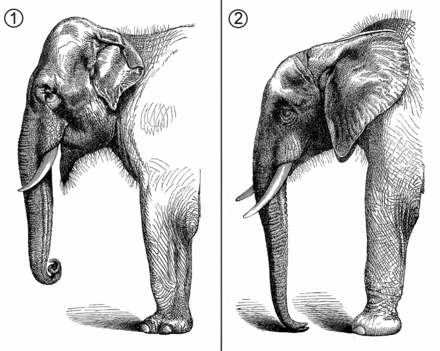
- Asian Elephant
- African Elephant
African elephants have larger ears and concave backs while Asian elephants have smaller ears and convex or level backs.
For the African elephants, tusks are present in both males and females, and are around the same length in both sexes. In the Asian species, only the males have large tusks. Female Asians have very small ones, or none at all
Tusk-less males exist and are particularly common among Sri Lankan elephants.
Normally the skin of an Asian elephant is covered with more hair than its African counterpart
African elephants are mostly browsers while Asian elephants are mainly grazers.
[Browsing is a type of herbivory in which a herbivore feeds on leaves, soft shoots, or fruits of high-growing, generally woody, plants such as shrubs. This is contrasted with grazing, usually associated with animals feeding on grass or other low vegetation. An example of this dichotomy are goats (which are browsers) and sheep (which are grazers)]
In general, Asian elephants are smaller than African elephants and have the highest body point on the head. The tip of their trunk has one finger-like process. Their back is convex or level. Ears are much smaller than their African counterpart but has a much bigger head (skull) than African elephants.
Musth, Reproduction and Birth
Adult males enter a state of increased testosterone known as musth. In southern India, males first enter musth at the age of 15, but it is not very intense until they are older than 25. In Africa, bulls under 24 do not go into musth, while half of those aged 25–35 and all those over 35 do.
Young bulls appear to enter musth during the dry season (January–May), while older bulls go through it during the wet season (June–December).
The main characteristic of a bull’s musth is a fluid secreted from the temporal gland that runs down the side of his face. He may urinate to spray on his hind legs. Behaviours associated with musth include walking with the head held high and swinging, picking at the ground with the tusks, marking, rumbling and waving only one ear at a time. This can last from a day to four months
Males become extremely aggressive during musth. They get into encounters which are typically consisting of threat displays, chases and minor sparring with the tusks. Serious fights are rare.
Bulls in musth emit a distinctive, low-frequency pulsated rumble nicknamed the “motorcycle”. Musth rumbles may be answered by the “female chorus”, a low-frequency, modulated chorus produced by several cows. A loud postcopulatory call may be made by an oestrous cow after mating. When a cow has mated, her family may produce calls of excitement known as the “mating pandemonium”
Elephants are polygynous breeders, and copulations are most frequent during the peak of the wet season
Gestation in elephants typically lasts around two years with interbirth intervals usually lasting four to five years. Births tend to take place during the wet season.
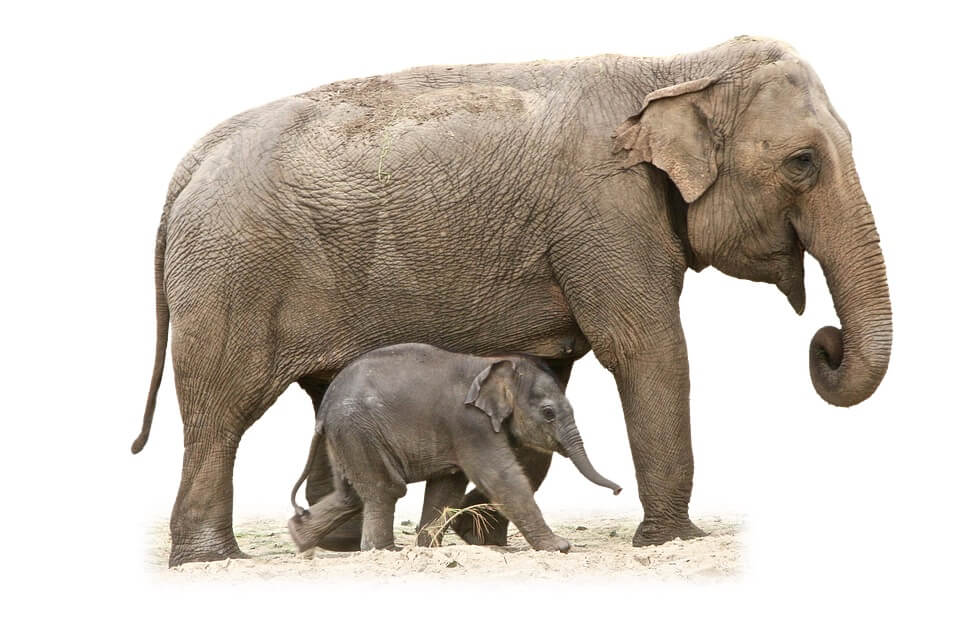
For its first three months, a calf relies entirely on milk from its mother for nutrition after which it begins to forage for vegetation and can use its trunk to collect water.
Play behavior in calves differs between the sexes; females run or chase each other, while males play-fight.
Females are sexually mature by the age of nine years while Males become mature around 14–15 years. Adulthood starts at about 18 years of age in both sexes.
Pygmy Elephants
The Borneo elephant, also called the Borneo pygmy elephant, inhabits northeastern Borneo, in Indonesia and Malaysia. Its origin remains the subject of debate.
https://www.youtube.com/watch?v=oKLUGQ1IAmI&nohtml5=False
They are much smaller in size compared to Asian Elephants. [Males grow to a height of less than 2.5 meters compared to other Asian elephants that grow to 3 meters.] They are also remarkably tame and passive.
Elephant Distribution in India
The total population of Asian elephants is estimated to be around 40,000–50,000. It is likely that around half of the population is in India.
Although Asian elephants are declining in numbers overall, particularly in Southeast Asia, the population in the Western Ghats in India appears to be increasing
In India the populations are restricted to four general areas:
- Northwest — at the foot of the Himalayas in Uttarakhand and Uttar Pradesh, ranging from Katarniaghat Wildlife Sanctuary to the Yamuna River;
- Northeast – from the eastern border of Nepal in northern West Bengal through western Assam along the Himalayan foothills as far as the Mishmi Hills, extending into eastern Arunachal Pradesh, the plains of upper Assam, and the foothills of Nagaland, to the Garo Hills of Meghalaya through the Khasi Hills, to parts of the lower Brahmaputra plains and Karbi Plateau; isolated herds occur in Tripura, Mizoram, Manipur, and in the Barak Valley districts of Assam:
- Central part — in Orissa, Jharkhand, and in the southern part of West Bengal, with some animals wandering into Chhattisgarh;
- South – eight populations are fragmented from each other in northern Karnataka, in the crestline of Karnataka–Western Ghats, in Bhadra–Malnad, in Brahmagiri–Nilgiris–Eastern Ghats, in Nilambur–Silent Valley–Coimbatore, in Anamalai–Parambikulam, in Periyar–Srivilliputhur, and one in Agasthyamalai
In the south if you are on any jungle safari in any of these forests you can get to see the elephants almost for sure like Nagarhole Kabini, Nagarhole Coorg, Bandipur, Mudumalai, Wayanad, BRT, Bhadra, Dandeli-Anshi (Kali) and pretty much almost all of national parks and wildlife sanctuaries in the south. Also, Karnataka boasts of the highest number of elephants in India. Both Bandipur and Nagarhole are both Elephant reserves of Karnataka. All of these are pretty close to Bangalore (180 to 270 kms) and there is an Elephant Training Camp in Dubare Coorg and again less than 270 kms from Bangalore. You get to feed, bather and play with the elephants.
So next time when you are a jungle safari, do notice all the features of an Indian elephant and do remember that they will remember you for sure if had seen you before. Remember, Elephants never Forget!!!
————————————–
WildTrails of India – “One Stop Destination for all Indian Wildlife Enthusiasts“
PS: Please be a responsible wildlife tourist; No littering, No sounds, No feeding, no getting down from the safari jeep (when on safari), No phone calls. Remember that we are visiting their home and when we are there, let’s follow their rules.
[The WildTrails of India is the best way to get all the details about Indian wildlife sanctuaries (best travel times, safari details, animal sightings, forest accommodations pairing, wildlife related activities, prices, etc). Learn more about WildTrails of India here. ios App is here. Android here, facebook page here ]
————————————–
With 4 years of Sightings data + Extensive expert tracker network in jungles, our customers had the best wildlife experiences.
Buy Wildlife Fashion Accessories
Exclusive Online Store for wildlife products
Packages
Packages Loading...
Recent Posts








